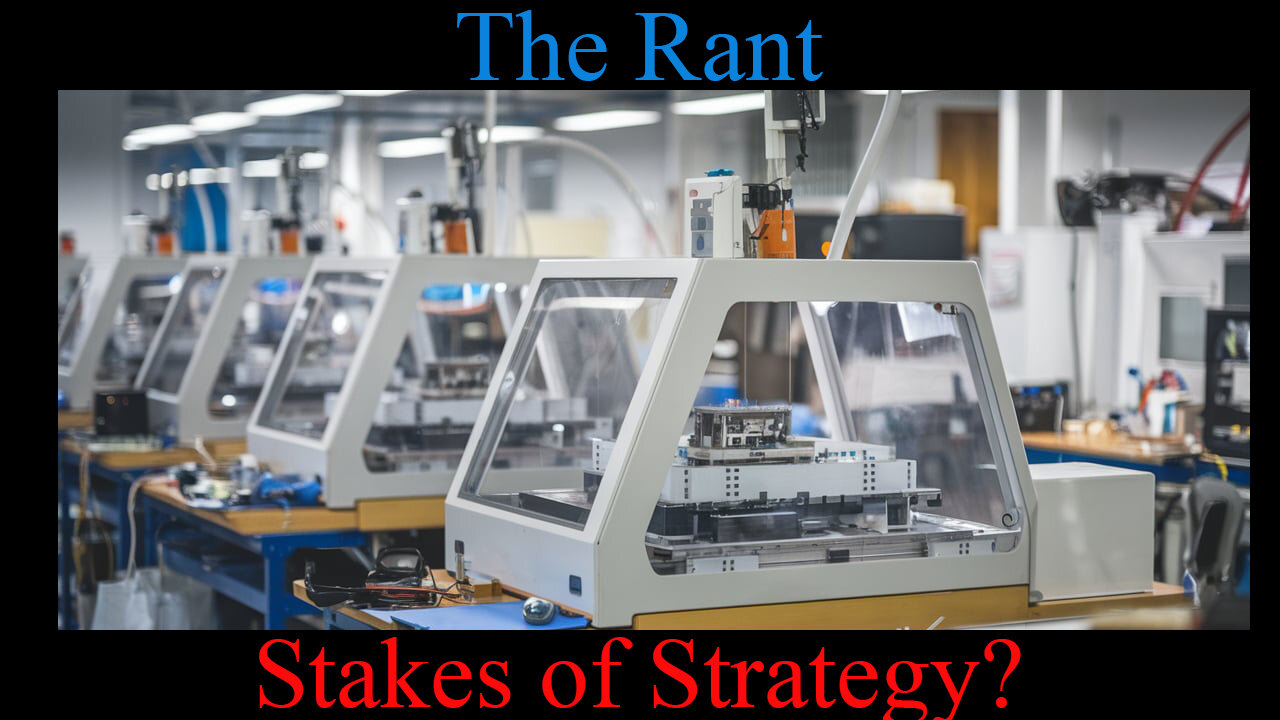Premium Only Content

The Rant-Stakes of Strategy?
The CHIPs and Science Act, a crucial legislation aimed at bolstering the US semiconductor industry, has been criticized for its lack of strategic planning. The Act, which has a $52 billion investment, aims to secure a robust supply chain, drive innovation, and ensure national security. However, if the funds are exhausted without a clear strategy, it could stifle investment in domestic semiconductor initiatives. The lack of a phased, well-managed approach to spending could lead to a boom-and-bust cycle, affecting job creation and investor confidence. The CHIPs Act also focuses on building infrastructure to support future semiconductor manufacturing, which could be undermined by a weak semiconductor sector. This could lead to job losses in high-tech industries and put the US at risk of falling behind in the semiconductor industry. The failure to capitalize on the current appropriations could also put the US's economic strength and technological sovereignty at risk.
As the United States navigates the complexities of the semiconductor landscape, isn’t leadership and strategic foresight paramount?
Doesn’t the CHIPs and Science Act presents a significant opportunity to create a thriving domestic semiconductor system?
However, to exhaust the Act’s appropriations prematurely couldn’t it spell disaster for both the semiconductor industry and the broader American economy?
Doesn’t the path forward require careful planning, a commitment to innovative practices, and a better view of investment that stretches beyond mere funding?
By adopting a measured approach to deploying these crucial resources, can’t the United States ensure that its semiconductor industry not only survives but thrives, driving economic growth and technological advancement for years to come?
The stakes are high, and isn’t it crucial that policymakers, industry leaders, and stakeholders work collaboratively to realize the full potential of the CHIPs and Science Act?
-
 3:36
3:36
The Rant
22 days agoThe Rant-Decrying Oligarchies?
302 -
 2:07:42
2:07:42
BlackDiamondGunsandGear
12 hours agoWho’s in Town for This Stream?
71.6K5 -
 1:24:56
1:24:56
Quite Frankly
22 hours ago"Wild Tales: Crazy Story Hotline" | The Brothers Ep. 1
101K17 -
 12:37
12:37
Tundra Tactical
19 hours ago $6.48 earned🚫🚫 Biden Era GUN CONTROL Gone!!!! 🚫🚫
76.9K21 -
 1:00:09
1:00:09
Motherland Casino
11 hours ago $7.03 earnedCynthia X Mia
66.9K7 -
 5:32:47
5:32:47
BubbaSZN
18 hours ago🔴 LIVE - BUBBA PLAYS WARZONE SEASON 3
46.8K2 -
 2:29:26
2:29:26
Mally_Mouse
18 hours agoSaturday Shenanigans!! - Let's Play: REPO
62.5K14 -
 8:07
8:07
WhaddoYouMeme
1 day ago $5.27 earnedBut His Response Left Them Speechless!
47.4K55 -
 21:24
21:24
marcushouse
1 day ago $4.64 earnedStarship Launches Won’t Be the Same After This! 🔥
43.9K23 -
 1:53:32
1:53:32
Joker Effect
13 hours agoINSANITY! DRAMA! MOTHERLAND HYPE! Going for the big win! If I reach 7k I am giving away money!
25.2K2